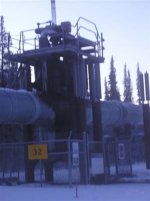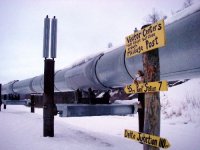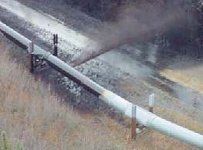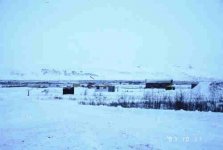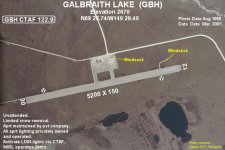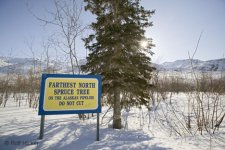Lyndon
Bronze Member
Originally the Trans Alaska Pipeline had Snow Tracs and Snow Masters. About 35 in all, and most were fitteted with the Ambulance Rear Doors. Then around the time they quit producing ST4's,Aleyska, (authority that runs the 800 mile,Trans Alaska Pipeline) decided to Up-grade. The personel of the pipeline wanted Haglunds but when the 'bean-counters' at Alyeska heard how expensive they were they opted out to purchase Tucker Sno Cats instead. They purchased 44. This constituted one of the largest single snow cat purchases in the history of the company. Only Northwest Tell's purchase of 100 Snow Trac's in 1960/1961 exceeded this. Generally Snow Cat manufactures are glad to make the sale of one or two machines to a Ski Area, or Phone company. >
Aleyska's Tuckers were equipped with giant fuel tanks, Diesel Engines and Allison Transmissions, making them slower than a stock Tucker, but they would run for 2 or 3 days on a tank of fuel. Most were 4 door with a small platform on the back, and the rest were the Freighters. All of them have 1983 as the manufacturing date on the nomenclature plate. In or around 1990 they purchased an additional 5 bombardier Ski Dozers. They had the same 5.9 Liter, 6 cylinder Turbo Cummings that the dodge pick-ups have. They also had a bazarre collection of attachments. The chasis were fitted with a rail system so that a huge 'Man box', a dump body, A back Hoe, a Small Crane and some other attachments could easily be installed and removed. They were equipped with 2 sets of tracks for varing snow conditions, and cost a bundle. Almost imediately 2 of the machines broke differentials and from that point on no one wanted to operate them so the ended up going to Auction when they were fairly new. But back when they were using them is where our story starts, in Valdez Alaska.
Aleyska's Tuckers were equipped with giant fuel tanks, Diesel Engines and Allison Transmissions, making them slower than a stock Tucker, but they would run for 2 or 3 days on a tank of fuel. Most were 4 door with a small platform on the back, and the rest were the Freighters. All of them have 1983 as the manufacturing date on the nomenclature plate. In or around 1990 they purchased an additional 5 bombardier Ski Dozers. They had the same 5.9 Liter, 6 cylinder Turbo Cummings that the dodge pick-ups have. They also had a bazarre collection of attachments. The chasis were fitted with a rail system so that a huge 'Man box', a dump body, A back Hoe, a Small Crane and some other attachments could easily be installed and removed. They were equipped with 2 sets of tracks for varing snow conditions, and cost a bundle. Almost imediately 2 of the machines broke differentials and from that point on no one wanted to operate them so the ended up going to Auction when they were fairly new. But back when they were using them is where our story starts, in Valdez Alaska.


 )
)